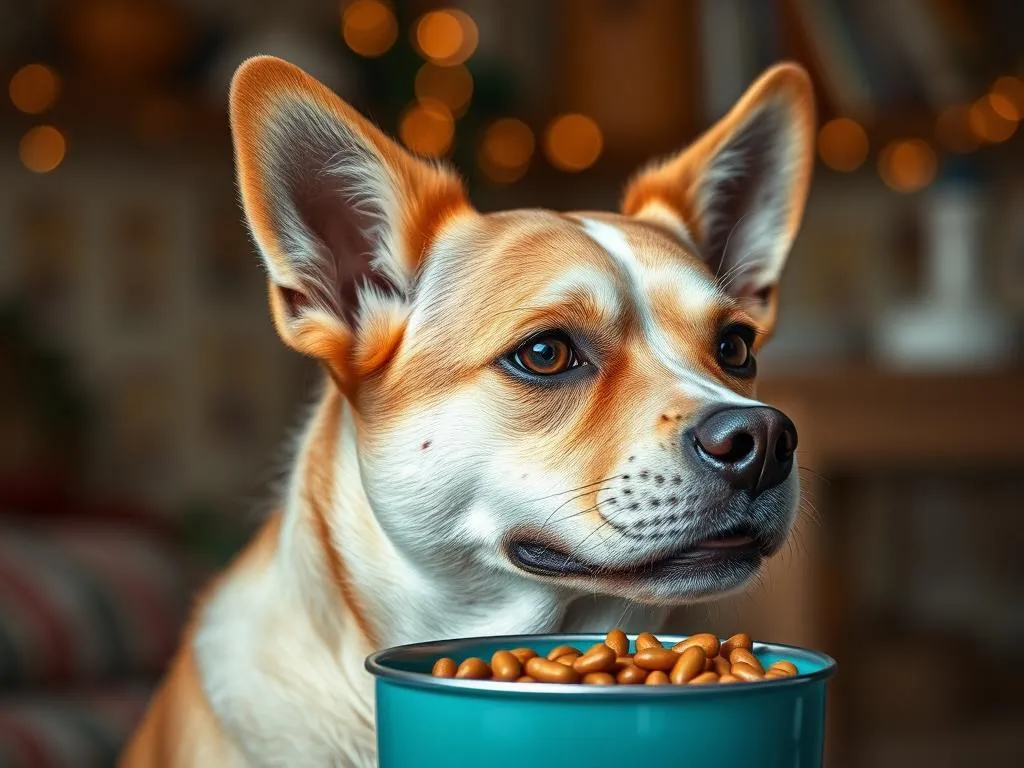
Introduction
Understanding dog nutrition is fundamental to ensuring your furry friend leads a long, healthy life. The balance of nutrients in their diet can significantly affect their overall well-being, energy levels, and lifespan. One common question among pet owners is whether you can warm up dog food. This query stems from concerns about palatability and the potential benefits of food temperature on a dog’s appetite and digestion.
In this article, we’ll explore the intricacies of dog nutrition, focusing specifically on the practice of warming dog food. We’ll address common concerns regarding food temperature, investigate the benefits and potential risks of warming dog food, and provide guidance on how to do it safely.
Understanding Dog Nutrition
Basics of Canine Nutrition
To grasp the importance of warming dog food, it’s essential first to understand the core components of canine nutrition. A balanced diet for dogs includes three primary macronutrients: proteins, fats, and carbohydrates.
- Proteins: These are crucial for growth, maintenance, and repair of tissues. Sources include meat, fish, eggs, and certain plant-based options like beans.
- Fats: These provide energy and help absorb certain vitamins. Healthy fats can be found in fish oil, chicken fat, and flaxseed.
- Carbohydrates: While not essential, carbohydrates can be a useful energy source. Grains, vegetables, and fruits are common carbohydrate sources in dog food.
Additionally, dogs require various essential vitamins and minerals to maintain health. These nutrients support numerous functions, including immune response, bone health, and metabolic processes.
A balanced diet varies based on the life stage of the dog. Puppies require more protein and fat to support growth, while adult dogs need a balanced ratio to maintain their health. Senior dogs may benefit from diets lower in calories but rich in fiber to aid digestion.
Common Dog Food Types
There are several types of dog food available, each with its advantages and disadvantages:
- Dry Kibble: This is the most common dog food type. It is convenient, cost-effective, and helps maintain dental health. However, it may lack moisture, which can be a concern for some dogs.
- Wet/Canned Food: This food type is typically more palatable and hydrating than dry kibble. While it can be more expensive, it’s often favored by picky eaters.
- Raw Diets: Some owners choose to feed their dogs raw meat, bones, and vegetables. While raw diets can provide natural nutrition, they also pose risks, such as bacterial contamination and nutrient imbalances.
- Homemade Diets: Cooking for your dog allows for control over ingredients, but balancing nutrients is crucial. Consultation with a vet or pet nutritionist is recommended to ensure all dietary needs are met.
Warming Up Dog Food
Reasons for Warming Dog Food
Many pet owners wonder, can you warm up dog food? There are several compelling reasons for doing so:
- Enhancing Flavor and Aroma: Warming dog food can amplify its aroma, making it more enticing, especially for picky eaters. Dogs have a strong sense of smell, and a warm meal can stimulate their appetite.
- Improving Digestibility: Slightly warming food can aid in digestion, as it may help break down nutrients more effectively, promoting better absorption.
- Comfort in Cold Weather: Dogs, like humans, can appreciate a warm meal, especially in colder climates or after recovering from illness. A warm meal can provide comfort and encourage eating.
How to Warm Dog Food Safely
If you decide to warm your dog’s food, there are several safe methods to consider:
-
Microwave: Place the food in a microwave-safe bowl and heat it for short intervals (around 10-15 seconds), stirring in between. Be sure to check the temperature thoroughly before serving.
-
Warm Water Bath: Place the sealed container of dog food in a bowl of warm water for several minutes. This method gently warms the food without risking hot spots.
-
Stovetop: For homemade or raw diets, warming the food over low heat can be effective. Stir continuously to avoid overheating any part of the meal.
Dos and Don’ts for Warming Up Dog Food:
– Do check the temperature of the food before serving. It should be warm but not hot.
– Don’t overheat food, as this can lead to nutrient loss.
– Do serve food immediately after warming to prevent bacterial growth.
– Don’t leave warmed food out for extended periods.
Potential Risks of Warming Dog Food
While warming dog food has its benefits, there are also potential risks to consider:
- Overheating and Nutrient Loss: Excessive heat can destroy some nutrients, diminishing the food’s overall nutritional value.
- Risk of Burns: If food is too hot, it can cause burns in your dog’s mouth or throat. Always test the temperature before serving.
- Bacterial Growth: If food is left out too long, warmed or not, it may become a breeding ground for bacteria. Always store food properly and discard any leftovers after a couple of hours.
Dog Food Storage and Handling
Proper Storage Techniques
How you store dog food can significantly impact its freshness and safety. Here are some best practices:
- Dry Food: Store in a cool, dry place in an airtight container to prevent moisture and pests. A sealed container can help maintain freshness and prevent oxidation.
- Wet Food: Once opened, canned food should be refrigerated and consumed within a few days. Use a clean utensil to scoop out food to avoid contamination.
- Raw and Homemade Diets: These should always be kept refrigerated and consumed promptly. If you prepare food in bulk, freeze portions to maintain freshness.
Safe Handling Practices
Hygiene is crucial when handling dog food. Here are some essential practices:
- Wash Hands: Always wash your hands before and after handling dog food to prevent the spread of bacteria.
- Use Clean Utensils: Avoid cross-contamination by using separate utensils for dog food and human food.
- Serve Immediately: Once food is prepared or warmed, serve it right away to reduce the risk of spoilage.
Signs Your Dog Needs Changes in Diet
Recognizing Food Preferences
Paying attention to your dog’s eating habits can reveal a lot about their preferences:
- Eating Habits: If your dog consistently leaves food behind, consider whether they might prefer warm dog food over cold options. Experimenting with food temperatures can lead to better eating habits.
- Behavior Changes: If your dog shows signs of reluctance to eat or has become more finicky, it might be time to explore different types of food or warming methods.
Health Indicators
Changes in your dog’s health can often be linked to their diet. Keep an eye out for:
- Weight Changes: Sudden weight loss or gain can indicate dietary imbalance.
- Coat Condition: Dull or flaky fur may suggest nutritional deficiencies.
- Energy Levels: A drop in energy might be related to inadequate nutrition.
If you notice any concerning signs, it’s essential to consult a veterinarian to discuss potential dietary changes.
Expert Recommendations
Veterinary Insights on Dog Nutrition
Veterinarians are invaluable resources for dietary advice. They can provide insights tailored to your dog’s specific health needs, life stage, and any medical conditions. Regular check-ups can help ensure your dog’s diet remains optimal.
Tips from Pet Nutritionists
Pet nutritionists can assist in formulating a balanced diet suitable for your dog. They can guide you on:
- Creating Balanced Meals: Tips on combining different food types to ensure all nutritional needs are met.
- Warming Food: Practical advice on how warming food can impact feeding practices and overall health.
Conclusion
Proper dog nutrition is vital to your pet’s health and longevity. Understanding the role of food temperature can enhance your dog’s eating experience, making meals more enjoyable and easier to digest. Experimenting with warming up dog food may be beneficial, especially for picky eaters or dogs requiring extra comfort.
Ultimately, the goal is to maintain a healthy and balanced diet tailored to your dog’s individual needs. By considering their preferences and nutritional requirements, you can ensure they remain happy, healthy, and well-nourished.









